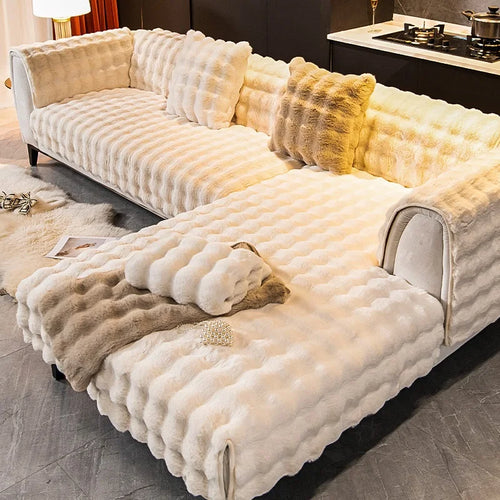hlThe Ultimate Guide to Cleaning and Caring for Your Leather Couch
You invested in a leather couch for a reason. It’s luxurious, elegant, and adds that perfect finishing touch to your space. But keeping it clean? Well, that’s another story.
Leather can be a bit tricky—stains, cracks, and general wear can take a sleek sofa and turn it into an eyesore. Whether you’re battling stains or just not sure where to start, you’re not alone. Millions of leather owners feel the same way. But with the right techniques, your couch can stay looking its best for years to come.
What to Avoid When Cleaning Leather
1. Avoid Harsh Chemicals
Household cleaners like bleach or ammonia can strip leather of its natural oils, leading to cracking or discolouration.
Tip: Stick to pH-neutral soaps or leather-specific cleaners for gentle, safe cleaning.
2. Don’t Use DIY Remedies Like Vinegar or Lemon Juice
You may have heard about DIY solutions involving vinegar or lemon, but these are acidic and can dry out leather or cause uneven patches.
Tip: Stick to products designed for leather. DIY fixes may seem convenient but can do more harm than good.
3. Avoid Excessive Water
While a slightly damp cloth is fine, soaking leather can lead to stains or even mould growth.
Tip: Use distilled water if you must dampen the cloth, and immediately dry any excess with a soft, dry cloth.
4. Stay Away from Abrasive Tools
Scouring pads or hard brushes can scratch leather, removing its protective finish and exposing it to further wear.
Tip: Use soft microfibre cloths and gentle leather brushes. Handle leather with care to avoid permanent damage.
5. Don’t Ignore Stains or Spills
Leather is porous, so spills can soak in if not handled immediately.
Tip: Blot spills with a clean, dry cloth rather than rubbing, which can push the stain further in.
6. Keep Away from Direct Sunlight and Heat Sources
Prolonged exposure to sunlight or heating vents can dry out and crack leather, while UV rays fade its colour.
Tip: Keep leather furniture out of direct sunlight and use blinds or curtains to protect it from UV rays.
Understanding the Type of Leather You Have
Before cleaning, it’s important to know your leather type, as each has specific care needs.
Full-Grain Leather
Full-grain leather retains the natural grain, making it highly durable but prone to staining.
Care: Condition regularly to maintain softness and use mild cleaners only.
Top-Grain Leather
Top-grain leather is sanded to remove imperfections and is typically treated with a protective coating.
Care: Clean with a damp cloth and condition periodically for a supple finish.
Aniline Leather
Aniline leather is dyed without a protective coating, so it looks natural but is highly absorbent.
Care: Ideal for low-traffic areas; clean gently and condition often.
Semi-Aniline Leather
Semi-aniline has a thin protective coating, giving it a balance of natural appearance and durability.
Care: Use mild cleaners and condition occasionally.
Pigmented Leather
Pigmented leather is treated with a protective layer, making it durable and easy to clean.
Care: Wipe with a damp cloth; condition occasionally for softness.
Bonded Leather
Bonded leather is made from leather scraps bonded with adhesives and a synthetic top layer, making it less durable.
Care: Gentle cleaning is essential, but its lifespan is generally shorter.
Essential Supplies for Leather Cleaning
- Soft Microfibre Cloths: Non-abrasive and perfect for applying cleaning solutions.
- pH-Neutral Soap or Leather Cleaner: Gentle and effective in removing dirt without drying out the leather.
- Distilled Water: Prevents mineral spots on leather.
- Leather Conditioner or Balm: Keeps leather soft, prevents cracking, and restores natural oils.
- Soft Sponge or Leather Brush: Lifts dirt without damaging leather.
- Vacuum with Soft Brush Attachment: Removes dust from seams and surface.
- Cotton Swabs (Optional): Great for precision cleaning in hard-to-reach crevices.
Step-by-Step: How to Clean a Leather Couch
Step 1: Dust Regularly
Use a soft microfibre cloth to dust your couch weekly, including seams and corners where dust collects.
Tip: For deeper cleaning, use a vacuum with a soft brush attachment.
Step 2: Test Your Cleaning Product
Always patch-test in a hidden area to avoid damage or discolouration.
Tip: Apply a small amount of cleaner with a damp cloth, let sit for a few minutes, then check for any reactions.
Step 3: Clean with a Soft Cloth
Dampen a microfibre cloth with distilled water and a little pH-neutral soap. Gently wipe the couch, being cautious not to over-wet.
Tip: Use circular motions for an even clean and avoid scrubbing, which can cause wear.
Step 4: Remove Excess Moisture
Wipe away any remaining moisture with a dry microfibre cloth, paying special attention to seams.
Tip: Moisture can cause stains if left on the leather, so ensure the couch is dry before continuing.
Step 5: Apply Leather Conditioner
Conditioning is key for maintaining softness. Apply a small amount of leather conditioner or balm in circular motions, following the product’s instructions.
Tip: Use sparingly to avoid a greasy finish.
Step 6: Buff for a Shine
After conditioning, buff the leather with a clean, lint-free cloth for a polished look.
Tip: Buffing not only improves shine but also enhances the protective layer from conditioning.
Tips for Maintaining Your Leather Couch
1. Dust and Wipe Regularly
Weekly dusting prevents grime buildup and maintains the leather’s natural shine.
Tip: Once a month, use a damp cloth for a deeper clean.
2. Condition Every 6-12 Months
Conditioning helps restore lost moisture, keeping leather soft and crack-free.
Tip: Apply conditioner sparingly and buff afterward to avoid greasiness.
3. Protect from Direct Sunlight
Direct sun exposure fades and dries out leather. Keep your couch out of sunlight or use UV-protection sprays.
4. Address Spills Immediately
Quickly blotting spills helps avoid stains or deeper absorption.
5. Rotate Cushions and Seating Areas
Even out wear by switching up seating arrangements and cushion positions.
6. Keep Pets Off the Couch
Leather is less prone to hair but can scratch easily. Consider using a cover if pets are unavoidable.
7. Avoid Harsh Environments
Keep leather away from extreme heat or cold, as it can dry out and stiffen.
Tip: If in a dry climate, use a humidifier to maintain leather’s moisture.
Keep Your Leather Couch Looking Luxurious
With the right products, routine cleaning, and a bit of regular care, your leather couch can remain as luxurious as the day you bought it. Dusting, conditioning, and smart placement protect against cracks, fading, and general wear. Leather ages beautifully with proper care, adding comfort and elegance to your home.
For added protection, consider a stylish couch cover that shields against daily wear, spills, and sunlight. Our easy-to-fit covers come in various colours, offering style and peace of mind while enhancing your decor. Give your leather couch the care it deserves—without sacrificing style.

